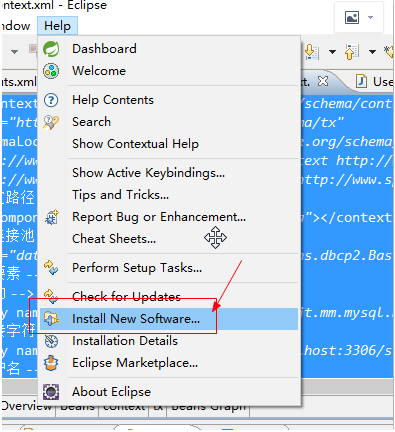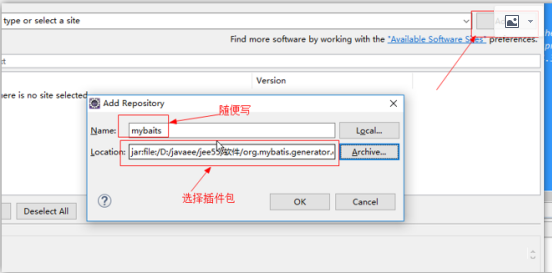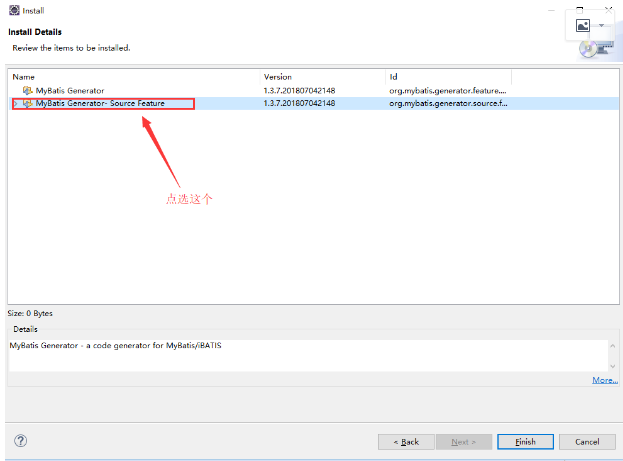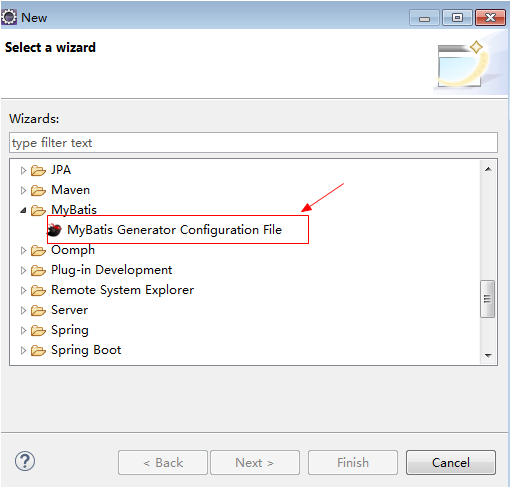1.动态SQL
1.1 什么是动态SQL?
动态SQL就是通过传入的参数不一样,可以组成不同结构的SQL语句。 这种可以根据参数的条件而改变SQL结构的SQL语句,我们称为动态SQL语句。使用动态SQL可以提高代码重用性。
1.2 XML方式的实现
1.2.1 需要使用到的标签
<if> 用于判断,类似java的if(){}
<foreach>一般用户批量处理的SQL语句,类似java的foreach循环,
<trim> :切割标签,主要用于切割关键字的头和尾的字符.新版的Mybatis使用的几率很少.
<set>:使用 set标签就是SQL语言的set关键字,可以在update 的时候set 关键字后面的,逗号可以自动忽略
<where>:使用where标签作为SQL语言的where关键字,好处如果where后面的条件都不成立,忽略where关键字.
<choose> <when> <otherwise> : java的swithc case
<sql> 用于声明公有的SQL语句块.,在操作标签中使用<include>调用 [一般不建议用]
不建议的原因,会导致代码难以维护。
1.2.2 使用示例
条件查询:(where)
public List<User> selectByCondition(User user); <!-- 条件查询 --><select id="selectByCondition" parameterType="com.gjs.pojo.User" resultType="com.gjs.pojo.User">select * from user<where><!-- if标签:条件判断标签 --><if test="name!=null">name = #{name}<!--或者使用模糊查询: name like concat('%',#{name},'%') --></if><if test="age != null">and age = #{age}</if></where> </select>
修改:(set)
public int updateByNotNull(User user);
<update id="updateByNotNull" parameterType="com.gjs.pojo.User">update user <!-- set --><set><if test="name != null">name=#{name},</if><if test="password != null">password=#{password},</if><if test="age != null">age=#{age}</if></set>where id=#{id} </update>
根据条件统计个数(trim )
public Long selectTotalByCondition(User user); <!-- 动态SQL语句trim标签 perfix : 动态sql语句的前缀 (WHERE,SET)prefixOverrides : 自动截取掉或者替换条(WHERE 多余后面 关键字 :AND-OR)--><select id="selectTotalByCondition" parameterType="com.gjs.pojo.User" resultType="long" >select count(*) from user<trim prefix="WHERE" prefixOverrides="AND|OR"><if test="name!=null">name like concat('%',#{name},'%')</if><if test="age != null">and age = #{age}</if></trim></select><!-- set操作: <trim prefix="SET" suffixOverrides=","> -->
批量删除:(foreach)
public int deleteByIds(@Param("ids")List<Integer> ids);
<delete id="deleteByIds" parameterType="Integer">delete from user where id in<!-- 动态sql语句 foreach 循环标签 <foreach collection="" open="" close="" item="" separator=""></foreach>collection : 要循环集合或者数组 open :开始位置符号 前小括号 (close : 开始位置符号 后小括号 )item : 每次循环的数据separator : 分隔符 逗号 ,--><foreach collection="ids" open="(" close=")" item="id" separator=",">#{id}</foreach></delete>
<sql>的使用:
<sql id="condition_sql"><where><if test="name !=null"><!-- name like '%${name}%' -->name like concat('%',#{name},'%')</if><if test="age !=null">and age = #{age}</if> </where></sql><select id="selectByCondition" parameterType="com.gjs.pojo.User" resultType="com.gjs.pojo.User">select * from user<!-- 引入sql片段. refid :被引入sql片段的id --><include refid="condition_sql_by_trim"/</select>
1.3 注解方式实现
动态sql除了支持xml方式以外,还是支持使用纯注解的方式
主要一下四个注解+对应动态sql语句的类文件
1.@SelectProvider 动态查询SQL语句对应注解
2.@InsertProvider 动态插入SQL语句对应注解
3.@UpdateProvider 动态修改SQL语句对应注解
4.@DeleteProvider 动态删除SQL语句对应注解
示例:
Usermapper
package com.gjs.mapper;import java.util.List;import org.apache.ibatis.annotations.DeleteProvider; import org.apache.ibatis.annotations.Param; import org.apache.ibatis.annotations.SelectProvider; import org.apache.ibatis.annotations.UpdateProvider;import com.gjs.pojo.User; import com.gjs.pojo.UserProvider;public interface UserMapper {/** 条件查询* type : 编写动态sql语句的类对应的字节码* method : 编写动态sql语句类对应的方法名称* 此方法返回的是一个String字符串,字符串就是用于注解方法查询的sql语句*/@SelectProvider(type= UserProvider.class,method="selectByCondition")public List<User> selectByCondition(User user);//根据条件统计总数@SelectProvider(type= UserProvider.class,method="selectTotalByCondition")public Long selectTotalByCondition(User user);//修改@UpdateProvider(type= UserProvider.class,method="updateByNotNull")public int updateByNotNull(User user);//批量删除@DeleteProvider(type=UserProvider.class,method="deleteByIds")public int deleteByIds(@Param("ids")List<Integer> ids); }
UserProvider
构建方法参数规则:
1.非数组、集合的参数,调用方法是什么,构建SQL语句的方法就是什么
2.是数组、集合的参数,构建的方法需要包一层Map。如:调用方法为:String[] ids ,构建方法格式为Map<String,String[]> ids
package com.gjs.pojo;import java.util.List;import org.apache.ibatis.annotations.Param;public class UserProvider {public String selectByCondition(User user) {StringBuilder sb = new StringBuilder();sb.append("select * from user where 1=1 ");if(user.getName()!=null) {//由于最后字符串还是返回给Mybatis执行的所有这里需要使用OGNL表达式来获取对象属性的值sb.append("and name like concat('%',#{name},'%') ");}if(user.getAge()!=null) {sb.append("and age = #{age}");}return sb.toString();}public String selectTotalByCondition(User user) {StringBuilder sb = new StringBuilder();sb.append("select count(1) from user where 1=1 ");if(user.getName()!=null) {sb.append("and name like concat('%',#{name},'%') ");}if(user.getAge()!=null) {sb.append("and age = #{age}");}return sb.toString();}public String updateByNotNull(User user) {StringBuilder sb = new StringBuilder();sb.append("update user set ");if(user.getName()!=null) {sb.append("name = #{name},");}if(user.getPassword()!=null) {sb.append("password = #{password},");}if(user.getAge()!=null) {sb.append("age = #{age},");}sb.deleteCharAt(sb.length()-1);//删除末尾多余的逗号","sb.append("where id = #{id}");return sb.toString();}public String deleteByIds(@Param("ids")List<Integer> ids) {StringBuilder sb = new StringBuilder();sb.append("delete from user where id in(");for (int i = 0; i < ids.size(); i++) {sb.append("#{ids["+i+"]},");}sb.deleteCharAt(sb.length()-1);//删除末尾多余的逗号","sb.append(")");return sb.toString();} }
2.缓存
在Mybatis里面,所谓的缓存就是将已经查询过的记录放在内存的缓冲区或文件上,这样如果再次查询,可以通过配置的策略,命中已经查询过的记录.从而提高查询的效率。
Mybatis的缓存分为一级缓存和二级缓存
2.1 一级缓存
所谓的一级缓存就是会话(SqlSesion对象)级别的缓存,就是同一个会话,如果已经查询过的数据会保存一份在内存中,如果会话没有关闭,再次调用同样的方法查询,不会再查询数据库,而是直接从缓存中取出之前查询的数据。一级缓存默认是打开的,而且是关闭不了的。
以下几种情况一级缓存会被清空:
1.关闭会话.close()
2.进行了操作(增删改),提交了commit();
3.手工清除缓存clearCache()
2.2 二级缓存
二级缓存是 SqlSessionFactory级别,在整个应用都有效,可以在多个会话有效
MyBatis本身并没有实现二级缓存,二级缓存需要第三方缓存提供商的支持
Ehcache:
下载地址:https://github.com/mybatis/ehcache-cache/releases
学习地址:http://www.mybatis.org/ehcache-cache/
3.MyBatis的对象关系映射
在实际开发中,一个业务可能涉及到多个数据表的查询,那么多表查询就涉及连接查询(等值连接), 等值连接 表与表之间有一个外键关键。
但是程序中最终获取的表封装的对象, 对象与对象之间是没有外键关系的,对象和对象之间只有依赖关系
对象之间关系主要是四种(什么关系应该看从哪个对象的角度)
一对一 关系
一个人对应身份证号
一对多 关系
一个部门对应多个员工
多对一 关系
多个员工对应一个部门
多对多 关系
多个学生对应多个老师,多个学生对应多个课程
MyBatis框架支持多表查询封装对象之间关系:
<collection>标签: 一对多查询
<association>标签:多对一和一对一查询
注:<collection>和<association>为<resultMap>的子标签
3.1 多对一查询(<association>联合查询标签)(N+1)
例:以员工为中心来查询关联部门(多对一关系,多个员工对应一个部门)
数据库表
员工表 CREATE TABLE `employee` (`id` int(11) NOT NULL AUTO_INCREMENT,`name` varchar(50) DEFAULT NULL,`dept_id` int(11) DEFAULT NULL,PRIMARY KEY (`id`) ) ENGINE=InnoDB AUTO_INCREMENT=6 DEFAULT CHARSET=utf8; 部门表 CREATE TABLE `department` (`id` int(11) NOT NULL AUTO_INCREMENT,`name` varchar(255) DEFAULT NULL,PRIMARY KEY (`id`) ) ENGINE=InnoDB AUTO_INCREMENT=4 DEFAULT CHARSET=utf8;
部门类
package com.gjs.pojo;public class Department {private Integer id;private String name;public Integer getId() {return id;}public void setId(Integer id) {this.id = id;}public String getName() {return name;}public void setName(String name) {this.name = name;}public Department(Integer id, String name) {super();this.id = id;this.name = name;}public Department() {super();}@Overridepublic String toString() {return "Department [id=" + id + ", name=" + name + "]";}}
员工类(Employee)
package com.gjs.pojo;public class Employee {private Integer id;private String name;//以员工为中心来关联部门,多对一关系,多个员工对应一个部门 : many2oneprivate Department dept;public Integer getId() {return id;}public void setId(Integer id) {this.id = id;}public String getName() {return name;}public void setName(String name) {this.name = name;}public Department getDept() {return dept;}public void setDept(Department dept) {this.dept = dept;}@Overridepublic String toString() {return "Employee [id=" + id + ", name=" + name + ", dept=" + dept + "]";} }
接口
package com.gjs.mapper;import com.gjs.pojo.Employee;public interface Many2OneMapper {/*** 根据与员工的编码查询出员工对应的所有信息(包含部门)* @param id* @return*/public Employee selectByEmpId(Integer id); }
接口映射配置文件
<?xml version="1.0" encoding="UTF-8" ?> <!DOCTYPE mapperPUBLIC "-//mybatis.org//DTD Mapper 3.0//EN""http://mybatis.org/dtd/mybatis-3-mapper.dtd"> <!-- 配置映射 namespace : 命名空间(通俗说法: 给当前映射文件的唯一标识:起一个唯一的名字) --> <mapper namespace="com.gjs.mapper.Many2OneMapper"><!-- 由于查询出来的结果于com.gjs.pojo.Employee中的属性不一致(Department dept),所以不能自动映射 --><select id="selectByEmpId" resultMap="emp_map" parameterType="int">select * from employee where id = #{id}</select><resultMap type="com.gjs.pojo.Employee" id="emp_map"><id property="id" column="id"/><result property="name" column="name"/><!-- 问题:private Department dept; 对象如何映射?解决方案: 使用联合查询标签<association property="" column="" select=""></association>property : 需要映射额属性 deptcolumn : 已知的部门外检列 dept_idselect : 调用查询通过部门id查询出对应部门对象的功能的id值规则 : 映射文件的命名空间 + 点儿(.) + 功能id如果是在同一个命名空间,可以省略命名空间和点--><association property="dept" column="dept_id" select="selectByDeptId"/></resultMap><select id="selectByDeptId" parameterType="int" resultType="com.gjs.pojo.Department">select * from department where id = #{id}</select> </mapper>
3.2 多对一查询(<collection>集合映射标签)(N+1)
例:以部门为中心查询部门的所有信息(包括员工),一个部门对应多个员工
部门类
package com.gjs.pojo;import java.util.List;public class Department {private Integer id;private String name;//以部门为中心查询部门的所有信息(包含员工)//一个部门有多个员工 一对多关系:one2many// 部门的元员工使用 list集合包装private List<Employee> emps;public Integer getId() {return id;}public void setId(Integer id) {this.id = id;}public String getName() {return name;}public void setName(String name) {this.name = name;}public List<Employee> getEmps() {return emps;}public void setEmps(List<Employee> emps) {this.emps = emps;}public Department(Integer id, String name) {super();this.id = id;this.name = name;}public Department() {super();}@Overridepublic String toString() {return "Department [id=" + id + ", name=" + name + ", emps=" + emps + "]";}}
员工类
package com.gjs.pojo;public class Employee {private Integer id;private String name;public Integer getId() {return id;}public void setId(Integer id) {this.id = id;}public String getName() {return name;}public void setName(String name) {this.name = name;}@Overridepublic String toString() {return "Employee [id=" + id + ", name=" + name + "]";}}
接口
package com.gjs.mapper;import com.gjs.pojo.Department;public interface One2ManyMapper {/*** 根据与部门的编码查询出部门对应的所有信息(包含所有员工)* @param id* @return*/public Department selectByDeptId(Integer id); }
接口对应的映射配置文件
<?xml version="1.0" encoding="UTF-8" ?> <!DOCTYPE mapperPUBLIC "-//mybatis.org//DTD Mapper 3.0//EN""http://mybatis.org/dtd/mybatis-3-mapper.dtd"> <!-- 配置映射 namespace : 命名空间(通俗说法: 给当前映射文件的唯一标识:起一个唯一的名字) --> <mapper namespace="com.gjs.mapper.One2ManyMapper"><select id="selectByDeptId" parameterType="int" resultMap="dept_map">select * from department where id = #{id}</select><resultMap type="com.gjs.pojo.Department" id="dept_map"><id property="id" column="id"/><result property="name" column="name"/><!-- 问题 :List<Employee> emps; 集合如何映射?解决方案: 使用 <collection>集合映射<collection property="" column="" select=""/>property :需要映射的属性 emps 对应的list集合column : 部门本身的主键 idselect : 关联查询的功能id规则 : 命名空间+点+功能id。 如果同一个命名空间下面直接 功能id即可--><collection property="emps" column="id" select="selectEmpsByDeptId"/></resultMap><select id="selectEmpsByDeptId" resultType="com.gjs.pojo.Employee" parameterType="int">select * from employee where id = #{dept_id}</select> </mapper>
3.3 等值连接方式查询
以上都是用N+1的方式。MyBatis的对象关系映射还有一种等值连接方式。
以一对多为例:
pojo类和接口皆与3.2的相同
映射配置文件:
<?xml version="1.0" encoding="UTF-8" ?> <!DOCTYPE mapperPUBLIC "-//mybatis.org//DTD Mapper 3.0//EN""http://mybatis.org/dtd/mybatis-3-mapper.dtd"> <!-- 配置映射 namespace : 命名空间(通俗说法: 给当前映射文件的唯一标识:起一个唯一的名字) --> <mapper namespace="com.gjs.mapper.One2ManyMapper"><select id="selectByDeptId" parameterType="int" resultMap="dept_map">select e.id e_id ,e.name e_name,d.id d_id,d.name d_namefrom department d JOIN employee e ON d.id = e.dept_id WHERE d.id = #{id};</select><resultMap type="com.gjs.pojo.Department" id="dept_map"><id property="id" column="d_id"/><result property="name" column="d_name"/><!--<collection property="emps" ofType="">在标签内部属性进行手动映射</collection>property : 要映射的属性ofType: 要映射集合泛型的类型 --><collection property="emps" ofType="com.gjs.pojo.Employee"><id property="id" column="e_id"/><result property="name" column="e_name"/></collection></resultMap> </mapper>
4.MyBatis的逆向工程
MyBatis的逆向工程能自动帮开发者生成数据库表对应的 pojo实体文件,自动生成映射文件
自定生成表的各种(CRUD)的sql语句, 但是只能做单表操作,联合查询还得开发者自己编写
4.1逆向工程的插件安装步骤
使用逆向工程得先在Eclipse安装逆向工程的插件




判断是否安装成功

4.2 逆向工程创建步骤
4.2.1.新建一个项目,导入mybatis.jar包和数据库驱动包
4.2.2 创建生成配置文件
generatorConfig.xml:
<?xml version="1.0" encoding="UTF-8"?> <!DOCTYPE generatorConfiguration PUBLIC "-//mybatis.org//DTD MyBatis Generator Configuration 1.0//EN" "http://mybatis.org/dtd/mybatis-generator-config_1_0.dtd"> <generatorConfiguration><context id="context1"><!-- 注释构建 --><commentGenerator><!-- 去掉所有的注释 --><property name="suppressAllComments" value="true"/><property name="suppressDate" value="true"/></commentGenerator><!-- 数据库四要素 --><jdbcConnection connectionURL="jdbc:mysql://localhost:3306/mybatis" driverClass="com.mysql.jdbc.Driver" userId="root" password="1234"/><!-- 实体类 : pojotargetPackage : 实体类生成后存放的包targetProject : 存放的目录一般都放在 src下面--><javaModelGenerator targetPackage="com.gjs.pojo" targetProject="mybatis-generator/src" /><!-- 映射文件 --><sqlMapGenerator targetPackage="com.gjs.mapper" targetProject="mybatis-generator/src" /><!-- 操作接口 type 生成映射的形式ANNOTATEDMAPPER : 纯注解的,没有xml映射XMLMAPPER : 生成的有xml映射文件--><javaClientGenerator targetPackage="com.gjs.mapper" targetProject="mybatis-generator/src" type="XMLMAPPER" /><!-- 要生成对应表的配置tableName : 数据库表名//如果下面全部是true,mybatis直接可以使用纯面向对象开发 enableCountByExample : 是否生成查询总数的 Example enableDeleteByExample : 是否生成删除的 Example enableSelectByExample : 是否生成查询集合的 Example enableUpdateByExample : 是否生成修改的 Example --><table tableName="user" enableCountByExample="false" enableDeleteByExample="false" enableSelectByExample="true" enableUpdateByExample="false"></table><table tableName="employee" enableCountByExample="false" enableDeleteByExample="false" enableSelectByExample="true" enableUpdateByExample="false"></table><table tableName="department" enableCountByExample="false" enableDeleteByExample="false" enableSelectByExample="true" enableUpdateByExample="false"></table></context> </generatorConfiguration>
主要是数据库四要素、实体类、映射文件、操作接口的配置视情况进行修改
4.2.3 开始逆向工程
选中generatorConfig.xml文件右击运行

4.3.逆向功能的缺点
逆向功能不能逆向多表操作,只能逆向单表操作,多表之间有外键对应java关联关系没办法映射,需要开发者手动编写对应代码。

)














@ LJC的HackTheTower)


